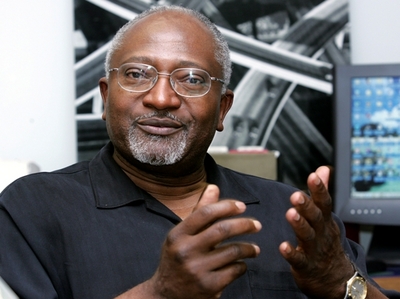Race is a potent factor in sorting people into their physical environment and in determining land use, industrial facility siting, housing patterns and infrastructure development. In the real world, some communities have the "wrong complexion for protection." The incineration of the deadly nerve agent VX waste water in Port Arthur, Texas typifies the environmental justice challenges facing African Americans and other people of color communities detailed in the new Toxic Wastes and Race at Twenty report, released in March 2007.
Racism and Jim Crow segregation forced Port Arthur's African Americans to the west part of town. There, the city built the Carver Terrace housing development for low-income blacks. By the 1970s, black were able to purchase homes on the other side of the KCS Railroad and many black families expanded through other parts of the city. And by 2006, 60 percent of the city's population was African American.
Veolia Environmental Services of Lombard, Illinois won a $49 million contract from the U.S. Army to incinerate 1.8 million gallons of caustic VX hydrolysate waste water near Port Arthur's Carver Terrace housing project. Army and city officials did not announce the project until the deal was sealed. Residents in New Jersey and Ohio fought off plans to incinerate the waste there. It is ironic that the first batch of VX hydrolysate was incinerated in Port Arthur last month on April 22-Earth Day.
Port Arthur is encircled by major refineries and chemical plants run by such companies as Motiva, Chevron Phillips, Valero and BASF. Residents whose homes are located at the fence line are riddled with cancer, asthma, and liver and kidney disease that some blame on the pollution from nearby industries. A 2003 health survey done by University of Texas Medical Branch at Galveston found that 75% of the people from Port Arthur complained of headaches and muscle aches compared to 20% in the control group from Galveston; 80% of Port Arthur people had ear, nose and throat conditions compared to 20% in the control area; and 80% percent of those questioned had heart conditions and respiratory problems in refinery neighborhoods compared to 30% in non-refinery areas.
The Carver Terrace housing project abuts the Motiva oil refinery. Jefferson County, where Port Arthur is located, is home to one of the country's largest chemical-industrial complexes, and is consistently ranked among the top 10 percent of America's dirtiest counties.
Over 57.5% of the residents who are within a two-mile radius of the three commercial hazardous facilities in the Beaumont-Port Arthur metro area are people of color. However, this problem is not unique to Port Arthur. Clearly, six of eight Texas metro areas have hazardous waste facilities siting disparities. More than three-fourths (78.6%) of the residents near waste facilities in the Houston metropolitan region are people of color. In Texas, for example, people of color comprise two-thirds (66.4%) of residents near commercial hazardous waste facilities.
The 2007 United Church of Christ Toxic Wastes and Race at Twenty study found people of color comprise the majority (56%) of the residents living in neighborhoods within two miles of the nation's commercial hazardous waste facilities, nearly double the percentage in areas beyond two miles (30%). They also make up more than two-thirds (69%) of the residents in neighborhoods with clustered facilities. Nine out of ten EPA regions have racial disparities in the location of hazardous waste sites, including Region VI, where Texas is located. People of color comprise 63 percent of the population near wastes sites in Region VI.
Percent People of Color | ||||
Metropolitan Area | Sites | Host | Non-Host | Difference |
Beaumont--Port Arthur, TX | 3 | 57.5 | 34.9 | 22.5 |
Corpus Christi, TX | 4 | 64.3 | 60.4 | 3.9 |
Dallas, TX | 8 | 55.1 | 43.2 | 11.9 |
Fort Worth--Arlington, TX | 2 | 49.6 | 33.8 | 15.8 |
Houston, TX | 10 | 78.6 | 52.7 | 25.9 |
Longview--Marshall, TX | 1 | 70.9 | 26.6 | 44.3 |
San Antonio, TX | 2 | 72.7 | 60.4 | 12.2 |
Wichita Falls, TX | 1 | 35.5 | 24.7 | 10.8 |
The 2007 UCC report also found that people of color make up more than two-thirds (69%) of the residents in neighborhoods with clustered facilities. Clearly, the current environmental protection system is broken and needs to be fixed. Long before Hurricane Katrina and the levee break devastated New Orleans and the Gulf Coast region, various levels of government have been slow to respond to environmental health threats from toxic waste and chemical in communities of color. For many polluting industries, and even government, it is has been a "race to the bottom," where land, labor, and lives are cheap (especially black lives) and where environmental "sacrifice zones" are created as the price of doing business.
Amid attacks, a chorus of environmental justice activists and civil rights leaders are calling for steps to reverse the dismantling of federal environmental justice initiatives. In addition to calling for reinstating the Toxic Release Inventory or TRI reporting requirements, EJ leaders are pushing for Congressional oversight along with a clear mandate for the EPA.
Environmental justice leaders want the new Congress to: hold oversight hearings on the slow government response to toxic contamination in low-income and people of color communities; implement the EPA Office of Inspector General's recommendations for integrating environmental justice into the agency's day-to-day operations; enact new legislation codifying the EJ Executive Order 12989; and devise a legislative "fix" for Title VI of the Civil Rights Act of 1964, that was severely weakened by the U.S. Supreme Court 2001 Alexander v. Sandoval decision requiring victims of discrimination to prove intent.
For more information on the burning of VX hydrolysate in Port Arthur, TX, please visit the Chemical Weapons Work Group (CWWG) website at http://www.cwwg.org.





